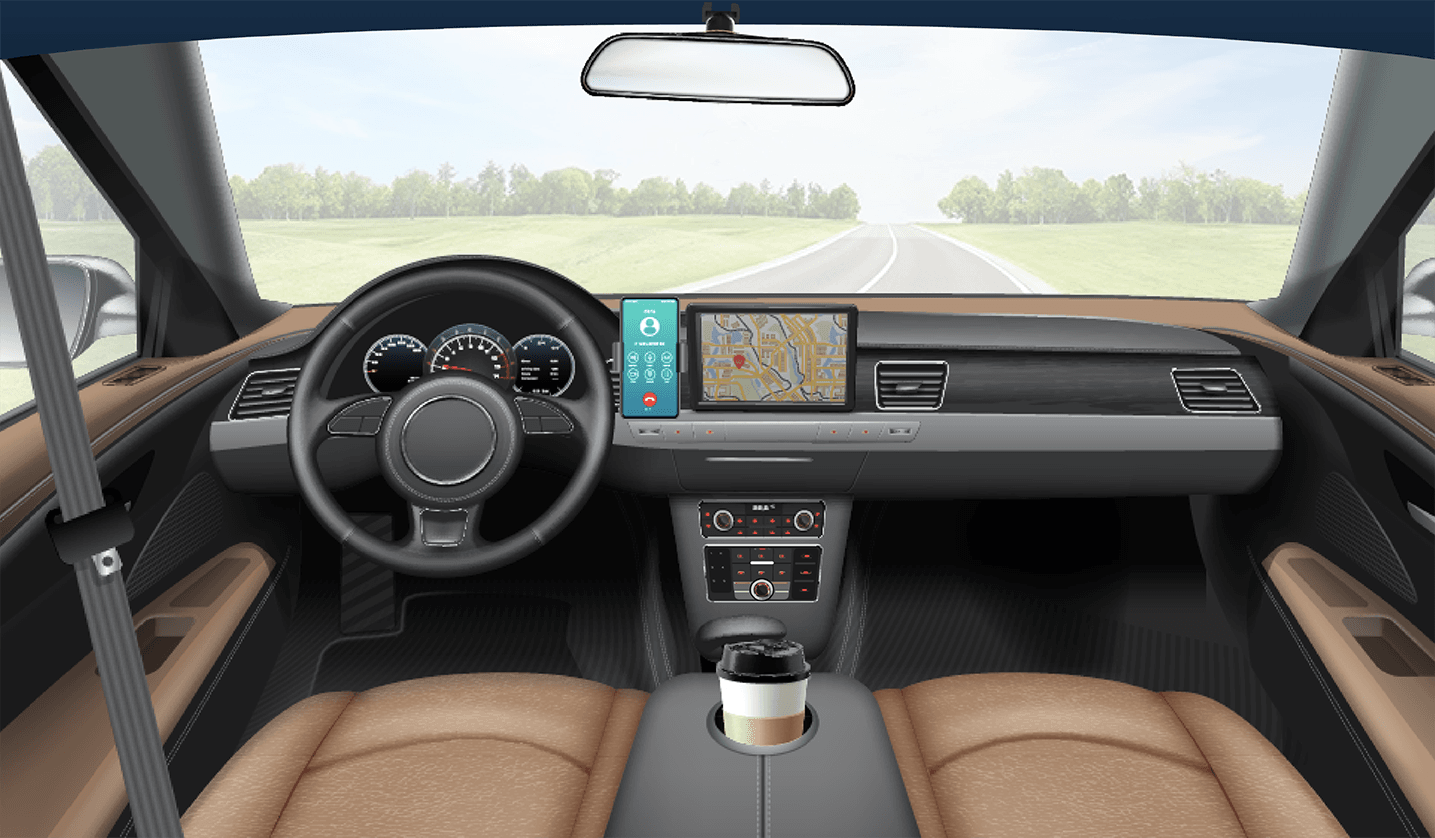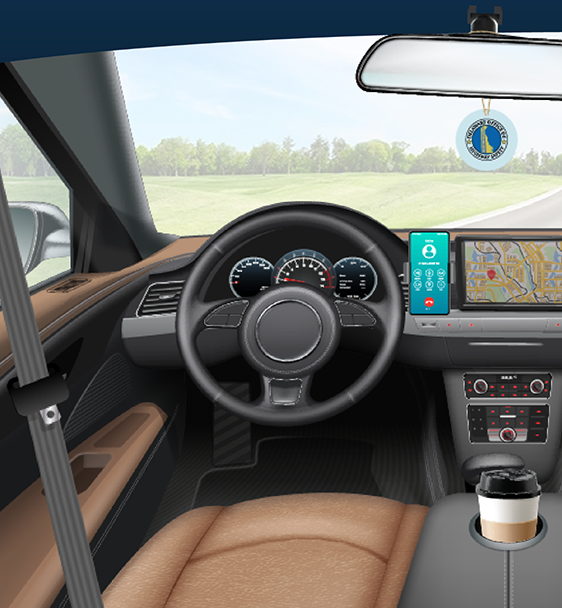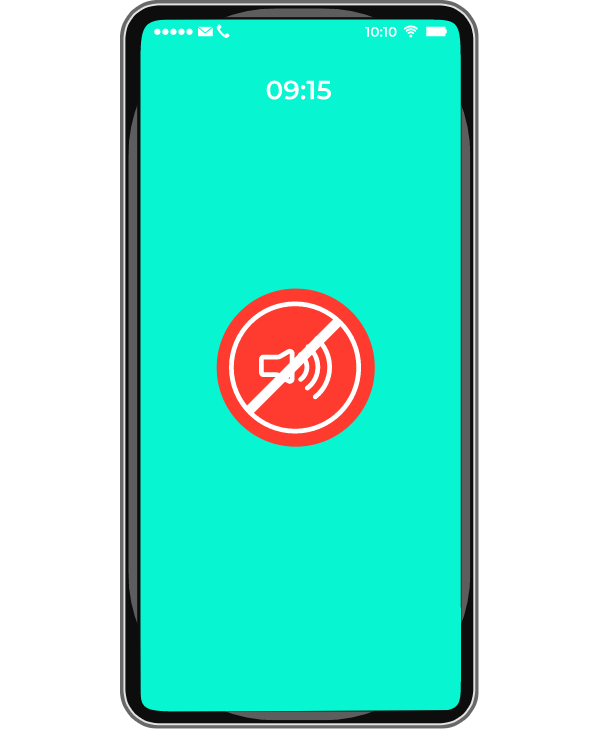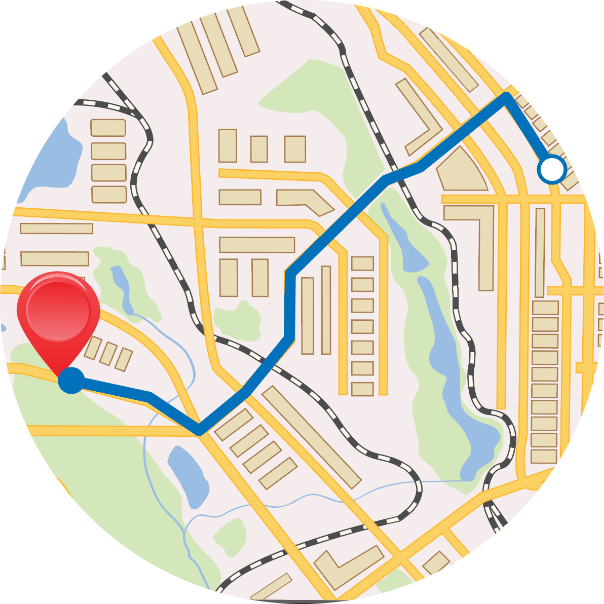LA VIDA ESTÁ LLENA DE DISTRACCIONES. EVÍTELAS CUANDO CONDUZCA.
Manejar distraído es una de las causas principales de accidentes. Mantengamos la vista y la mente en la carretera.

Esté alerta

Elija un número para conocer los peligros de manejar distraído

¡Póngalo en silencio mientras maneja!

¡Manténgase alerta!

¡No envíe mensajes mientras maneja!
La multitarea: ¿funciona o no?
Según la ciencia, no funciona. Cuando envía mensajes de texto y maneja al mismo tiempo, su cerebro simplemente intercambia las tareas de manera muy rápida, lo cual impide su habilidad de manejar bien.
Press another number!
Ley sobre los teléfonos celulares en Delaware
Los conductores no pueden hablar por teléfono si no utilizan un dispositivo manos libres. No pueden leer, escribir ni enviar mensajes de texto, correos electrónicos, ni usar el internet. Primera ofensa: una multa de $100.
Press another number!
¿Qué tan “discapacitados” están los conductores que envían mensajes de texto?
Un estudio muestra que enviar mensajes de texto mientras maneja es igual a manejar con un nivel de alcohol en la sangre dos veces mayor que el límite legal (0.19 vs. 0.08)!
Fuente: https://facilities.uw.edu/blog/posts/2016/07/26/texting-and-driving
Press another number!
¿Por qué es tan peligroso enviar mensajes de texto?
A pesar de que algunas distracciones pueden causar que aparte sus ojos de la carretera, o que quite sus manos del guía o que no se concentre en manejar, enviar mensajes hace que todo esto suceda al mismo tiempo.
Press another number!
La verdad sobre los teléfonos celulares manos libres
Cuando su mente se desvía de la carretera, su cerebro solo procesa una fracción de lo que usted ve. Los conductores que hablan por teléfono, aun si son manos libres, pueden llegar a perderse el 50% de sus alrededores.
Fuente: https://www.nsc.org/road/safety-topics/distracted-driving/cell-phone-distracted-driving
Press another number!
Los peligros de “la ceguera por falta de atención”
La ceguera por falta de atención mientras maneja se refiere a la inhabilidad de ver un objeto debido a que su atención está puesta en otra cosa, como enviar mensajes de texto.
Press another number!
¿Por qué hablar por teléfono es peor que hablar con un pasajero?
Sus pasajeros pueden observar lo que ocurre en la carretera, pueden alertarle y dejar de hablar para permitir que usted se enfoque. Las personas con quienes habla por teléfono no ven nada.
Press another number!
¿Cuántos conductores envían mensajes de texto mientras manejan?
Mientras que un 92% de los conductores en EE. UU. piensa que manejar y enviar mensajes al mismo tiempo es peligroso, un 26% reporta haber enviado un mensaje, y un 36% reporta haber leído un mensaje/correo electrónico mientras manejaba.
Fuente: https://aaafoundation.org/2021-traffic-safety-culture-index/
Press another number!
Consejos sobre los teléfonos celulares para el conductor seguro
Ponga su teléfono en el modo “No molestar” mientras maneja para que así pueda poner toda su atención en la carretera. No vale la pena el riesgo de usar su teléfono para hablar o enviar mensajes.
Press another number!
La multitarea: ¿funciona o no?
Según la ciencia, no funciona. Cuando envía mensajes de texto y maneja al mismo tiempo, su cerebro simplemente intercambia las tareas de manera muy rápida, lo cual impide su habilidad de manejar bien.
Ley sobre los teléfonos celulares en Delaware
Los conductores no pueden hablar por teléfono si no utilizan un dispositivo manos libres. No pueden leer, escribir ni enviar mensajes de texto, correos electrónicos, ni usar el internet. Primera ofensa: una multa de $100.
¿Qué tan “discapacitados” están los conductores que envían mensajes de texto?
Un estudio muestra que enviar mensajes de texto mientras maneja es igual a manejar con un nivel de alcohol en la sangre dos veces mayor que el límite legal (0.19 vs. 0.08)!
Fuente: https://facilities.uw.edu/blog/posts/2016/07/26/texting-and-driving
¿Por qué es tan peligroso enviar mensajes de texto?
A pesar de que algunas distracciones pueden causar que aparte sus ojos de la carretera, o que quite sus manos del guía o que no se concentre en manejar, enviar mensajes hace que todo esto suceda al mismo tiempo.
La verdad sobre los teléfonos celulares manos libres
Cuando su mente se desvía de la carretera, su cerebro solo procesa una fracción de lo que usted ve. Los conductores que hablan por teléfono, aun si son manos libres, pueden llegar a perderse el 50% de sus alrededores.
Fuente: https://www.nsc.org/road/safety-topics/distracted-driving/cell-phone-distracted-driving
Los peligros de “la ceguera por falta de atención”
La ceguera por falta de atención mientras maneja se refiere a la inhabilidad de ver un objeto debido a que su atención está puesta en otra cosa, como enviar mensajes de texto.
¿Por qué hablar por teléfono es peor que hablar con un pasajero?
Sus pasajeros pueden observar lo que ocurre en la carretera, pueden alertarle y dejar de hablar para permitir que usted se enfoque. Las personas con quienes habla por teléfono no ven nada.
¿Cuántos conductores envían mensajes de texto mientras manejan?
Mientras que un 92% de los conductores en EE. UU. piensa que manejar y enviar mensajes al mismo tiempo es peligroso, un 26% reporta haber enviado un mensaje, y un 36% reporta haber leído un mensaje/correo electrónico mientras manejaba.
Fuente: https://aaafoundation.org/2021-traffic-safety-culture-index/
Consejos sobre los teléfonos celulares para el conductor seguro
Ponga su teléfono en el modo “No molestar” mientras maneja para que así pueda poner toda su atención en la carretera. No vale la pena el riesgo de usar su teléfono para hablar o enviar mensajes.


¿Cuánto sabe sobre los peligros de la conducción distraída?
1 of 10


¡Correcto!
¡Correcto! Este grupo representa el 25% de todos los accidentes de tránsito mortales en los que la conducción distraída fue un factor.
¡Lo sentimos!
Lo sentimos, la respuesta correcta es 25-34. Este grupo representa el 25% de todos los accidentes de tránsito mortales en los que la conducción distraída fue un factor.
Recursos
- NHTSA Traffic Safety Facts Distracted Driving in 2021 https://crashstats.nhtsa.dot.gov/Api/Public/ViewPublication/813443

¡Correcto!
¡Correcto! La ciencia indica que su cerebro simplemente cambia muy rápidamente de una tarea a otra, lo cual degrada su capacidad para manejar bien.
¡Lo sentimos!
Lo sentimos, la respuesta correcta es No. La ciencia indica que su cerebro simplemente cambia muy rápidamente de una tarea a otra, lo cual degrada su capacidad para manejar bien.
Recursos
- https://www.nsc.org/workplace/resources/infographics/the-great-multitasking-lie

¡Correcto!
¡Correcto! Hay muchas cosas que pueden distraerle. Mantenga siempre las manos en el volante y los ojos en la carretera.
¡Lo sentimos!
Lo sentimos, la respuesta correcta es Todas las anteriores. Mantenga siempre las manos en el volante y los ojos en la carretera.
Recursos

¡Correcto!
¡Correcto! Cualquier cosa que le distraiga de la conducción provoca que esté menos seguro.
¡Lo sentimos!
Lo sentimos, la respuesta correcta es Todas las anteriores. Cualquier cosa que le distraiga de la conducción provoca que esté menos seguro.
Recursos

¡Correcto!
¡Correcto! Diversos estudios por resonancia magnética mostraron que escuchar a alguien hablar mientras maneja reduce la actividad cerebral centrada en la conducción en un 37%.
¡Lo sentimos!
Lo sentimos, la respuesta correcta es el 37%. Diversos estudios por resonancia magnética mostraron que escuchar a alguien hablar mientras maneja reduce de manera importante la actividad cerebral.
Recursos
- https://www.cmu.edu/homepage/computing/2009/summer/distracted-drivers.shtml

¡Correcto!
¡Correcto! Esta es una distancia más larga que la longitud de una cuadra urbana promedio. Imagínese lo que no ha visto.
¡Lo sentimos!
Lo sentimos, la respuesta correcta es 350 pies. Esta es una distancia más larga que la longitud de una cuadra urbana promedio. Imagínese lo que no ha visto.
Recursos
- ArriveAliveDE.com 5-Second Rule Tool

¡Correcto!
¡Correcto! Incluso hablando con un dispositivo de manos libres, los conductores pueden perderse hasta la mitad de lo que hay a su alrededor.
¡Lo sentimos!
Lo sentimos, la respuesta correcta es el 50%. Incluso hablando con un dispositivo de manos libres, los conductores pueden perderse hasta la mitad de lo que hay a su alrededor.
Recursos
- https://www.nsc.org/road/safety-topics/distracted-driving/cell-phone-distracted-driving

¡Correcto!
¡Correcto! Mientras su cerebro vuelve a enfocarse, sus habilidades al volante no son óptimas.
¡Lo sentimos!
Lo sentimos, la respuesta correcta es 13 segundos. Mientras su cerebro vuelve a enfocarse, sus habilidades al volante no son óptimas.
Recursos
- https://blog.drivedifferent.com/blog/10-distracted-driving-statistics-and-facts-for-safe-drivers

¡Correcto!
¡Correcto! La legislación de Delaware no permite el uso del teléfono mientras se maneja un vehículo de motor, excepto con un dispositivo de manos libres.
¡Lo sentimos!
Lo sentimos, la respuesta correcta es Ninguna de las anteriores. La legislación de Delaware no permite el uso del teléfono mientras se maneja un vehículo de motor, excepto con un dispositivo de manos libres.
Recursos
- https://ohs.delaware.gov/distracted.shtml

¡Correcto!
¡Correcto! Consulte nuestra herramienta, El Gran Escape, para obtener una lista completa de las tareas que debe realizar antes de empezar a manejar.
¡Lo sentimos!
Lo sentimos, la respuesta correcta es Todas las anteriores. Consulte nuestra herramienta, El Gran Escape, para obtener una lista completa de tareas que debe realizar antes de empezar a manejar.
Recursos

¡Respondió correctamente 0 de 10 preguntas!
EL GRAN ESCAPE
de conducción distraída


HERRAMIENTA DE LA REGLA DE 5 SEGUNDOS
¿Cuánto se desplaza su automóvil en los 5 segundos que pasa mirando un texto?
Elija la velocidad de su vehículo usando el velocímetro para averiguarlo.
Dashboard speedometer

CONSEJOS PARA MANTENERSE ALERTA
Estos son algunos consejos para mantener su concentración donde debe estar – en la carretera:
-
Utilice el celular solo para emergencias.
-
Descargue una aplicación que silencie las llamadas y los textos mientras su vehículo está en movimiento.
-
Realice otras actividades solo cuando esté fuera del vehículo.
-
Evite comer/beber mientras conduce.
-
Viaje con los niños y las mascotas asegurados.
-
Maquíllese en casa.
-
Configure los controles de temperatura antes de ponerse en marcha.
DISTRACCIONES QUE DEBE EVITAR
Hay muchas distracciones al manejar. Intente evitar estos comportamientos arriesgados:
-
Enviar textos o hablar sujetando el teléfono.
-
Buscar artículos en un bolso o cartera.
-
Consultar el GPS.
-
Quedarse mirando un accidente en la carretera.
-
Ajustar el cinturón de seguridad.
-
Cambiar la selección de música o el radio.
-
Hablar con los pasajeros.
-
Recoger un artículo que se ha caído al piso.
MANTENGA LA VISTA
EN LA CARRETERA.









